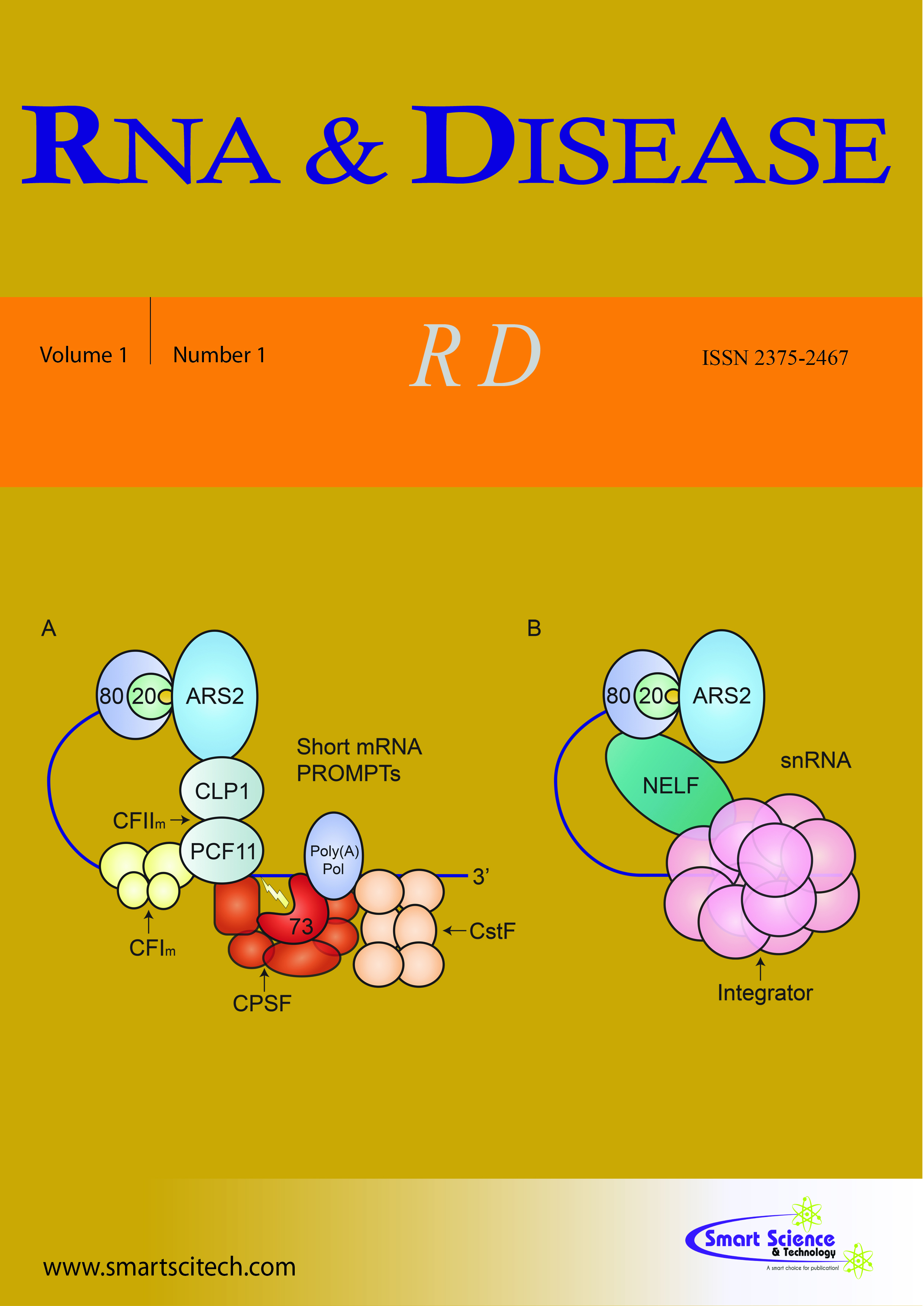Novel role of Na+,K+-ATPase ligands in regulating cytokines mRNA stability by HuR signalosome and the underlying pathophysiologic relevance
DOI: 10.14800/rd.546
Abstract
Increasing evidence demonstrated that Na+,K+-ATPase ligands, also called as cardiotonic steroids, are hormone-like immunoregulators, because endogenous Na+,K+-ATPase ligands are frequently detected in inflammatory-related diseases, moreover, Na+,K+-ATPase ligands regulate multiple aspects of immune responses. One of prominent roles of Na+,K+-ATPase ligands in regulating immunity is their abilities of modulating cytokines expression. Na+,K+-ATPase ligands can either upregulate or downregulate IL-1?, TNF-?, IL6, or iNOS expressions in different model system, however, all of those studies pointed to transcriptional upregulation. In our recent studies, we proposed for the first time that Na+,K+-ATPase ligands are capable of regulating cytokines mRNA stability by integrating multiple posttranscriptional mechanisms, including human antigen R (HuR) translocation, generation of miR181s, and formation of stress granules. These mechanisms did not function alone, but act in a synergistic or an antagonistic manner to fine-tune the cytokines expression, HuR nuclear export, however, forms signalosome and plays a core role among these processes. By taking advantage of these posttranscriptional mechanisms, Na+,K+-ATPase ligands stabilized cyclooxygenase-2 mRNA stability in lung epithelial cells and induced acute lung injury. In monocytes, ouabain-induced HuR export competed with miR181s on the shared target of TNF-?, also triggered stress granules formation and recruited TNF-? mRNA into it for protection, thereby stabilizing TNF-? mRNA and reversing sepsis-induced immunoparalysis, both in vitro and in vivo. Besides in immune-related diseases, HuR also regulated a variety of pro-oncogenes and anti-oncogenes expressions in cancer cells, which determined the cancer cells sensitivity towards Na+,K+-ATPase ligands or other chemotherapeutic drugs. In sum, HuR emerges as a very important signaling molecule in Na+,K+-ATPase ligands-mediated effects, which opens new avenues for understanding of the pathophysiologic and pharmacological activities of Na+,K+-ATPase ligands. Identification of the components of HuR signalosome will offer more novel targets and biomarkers for diseases therapy.











